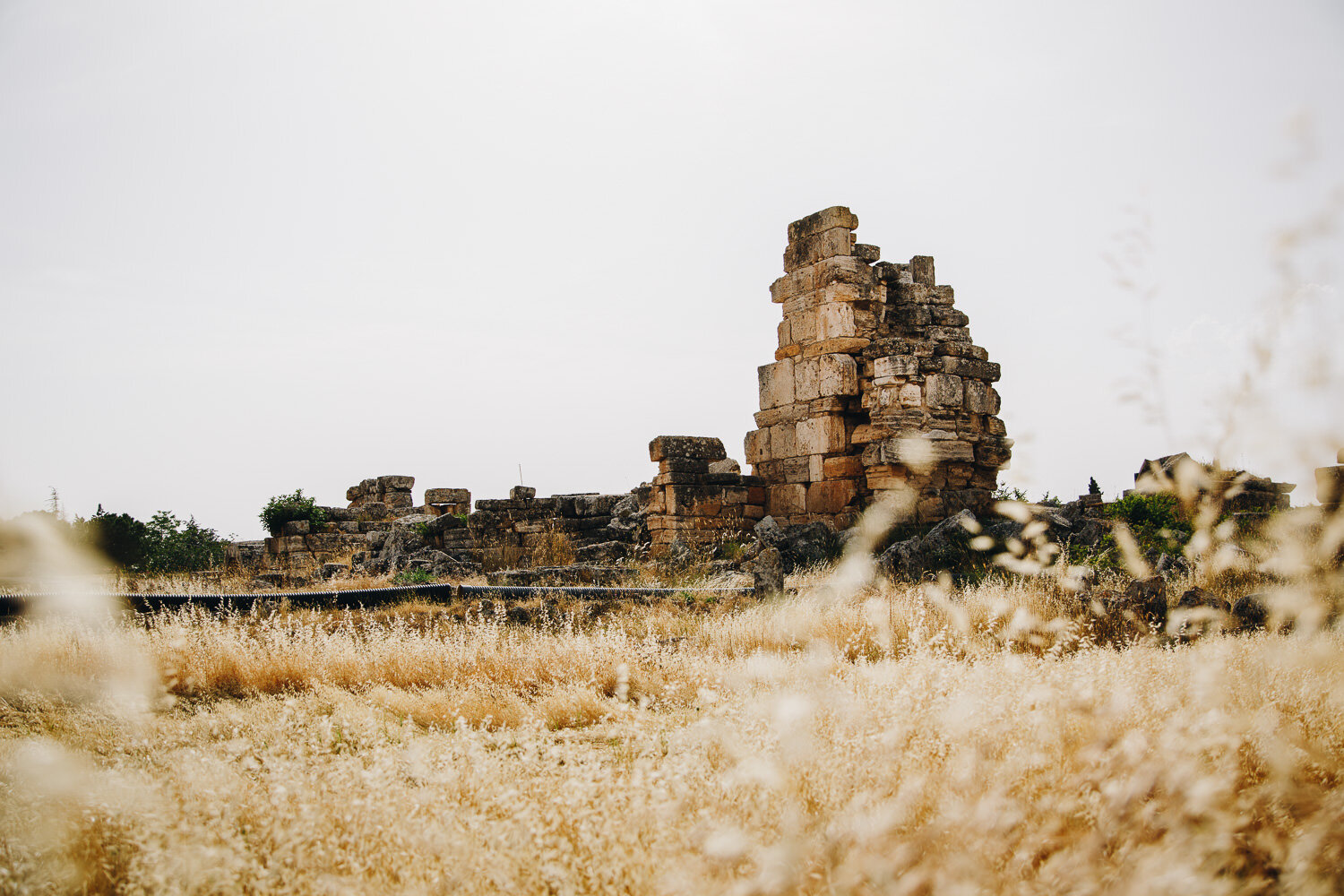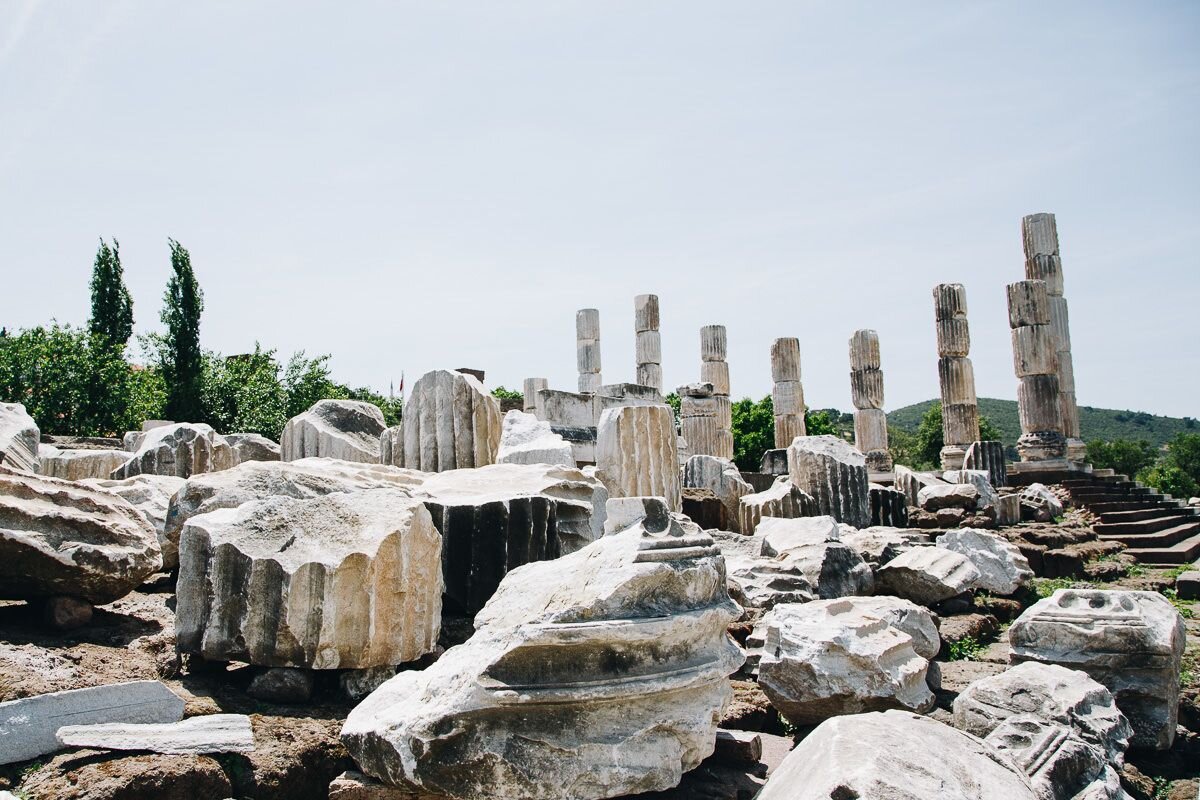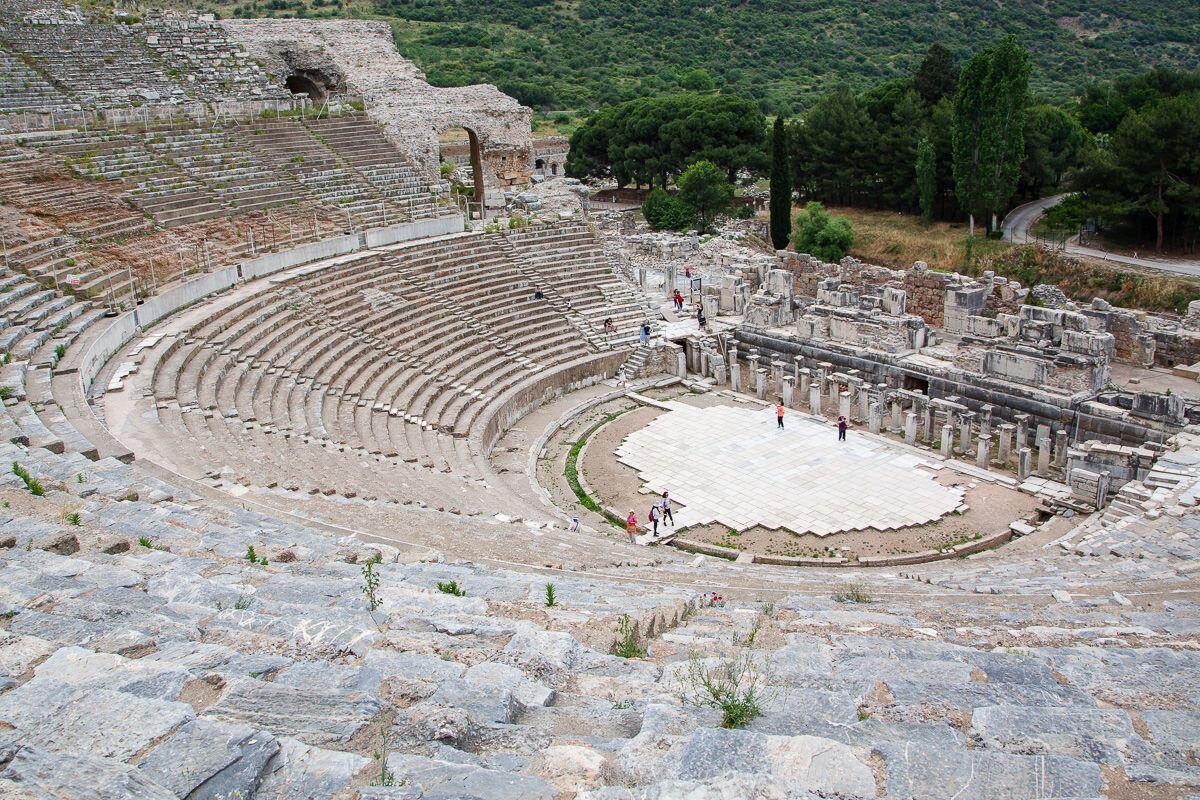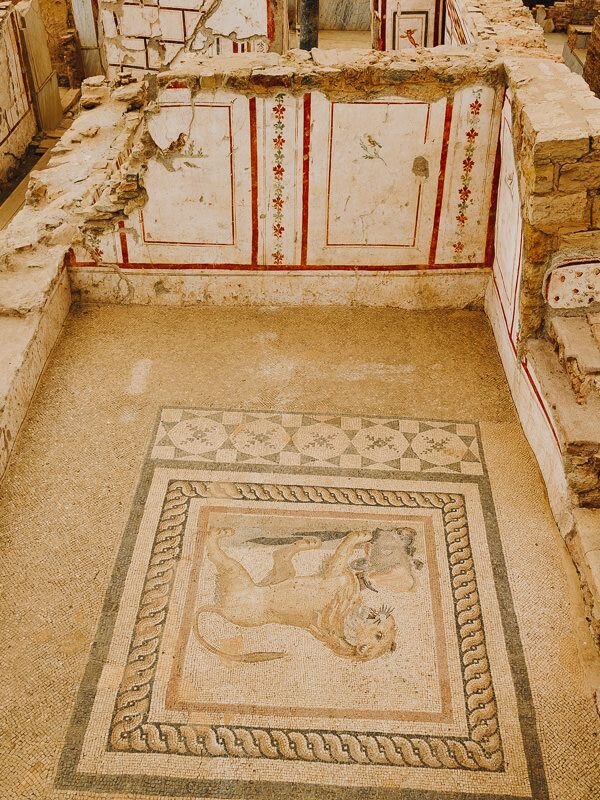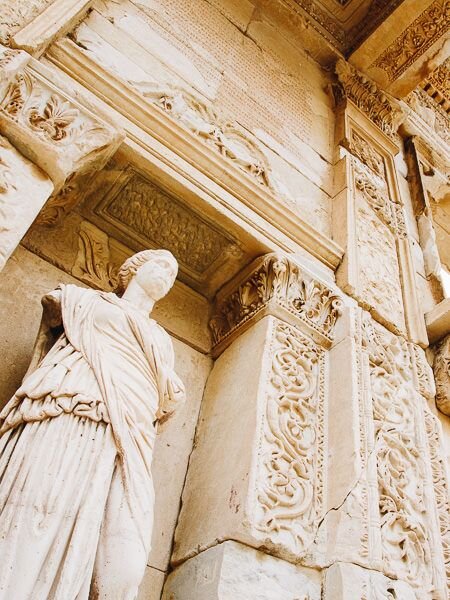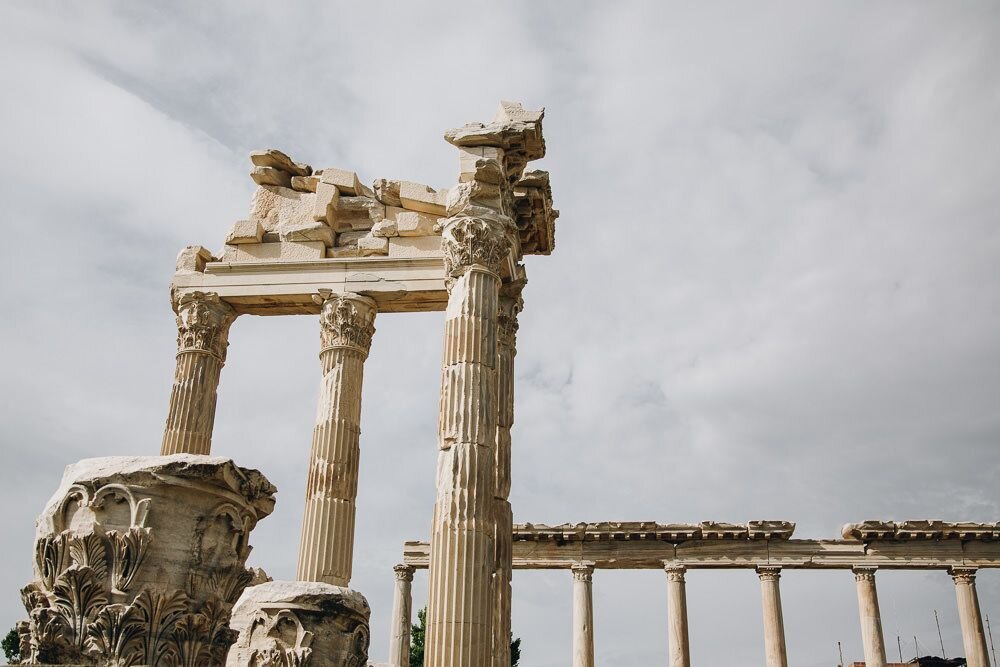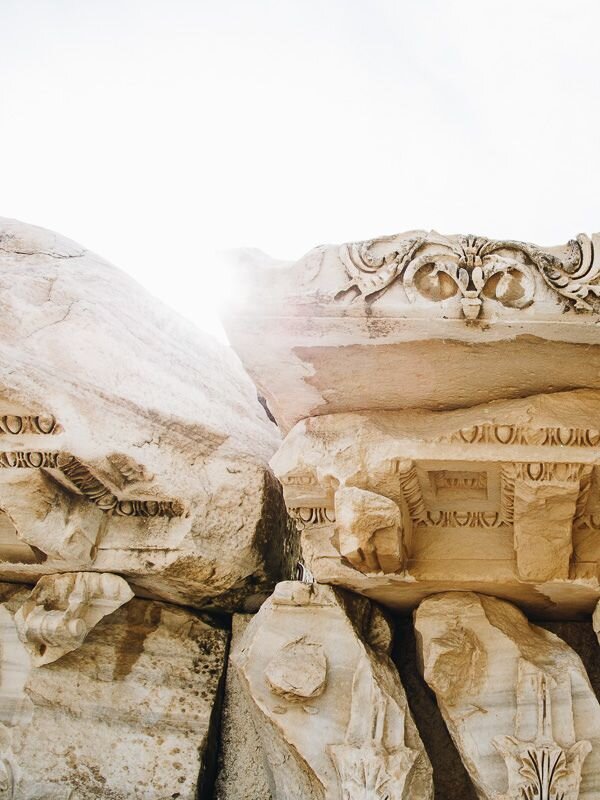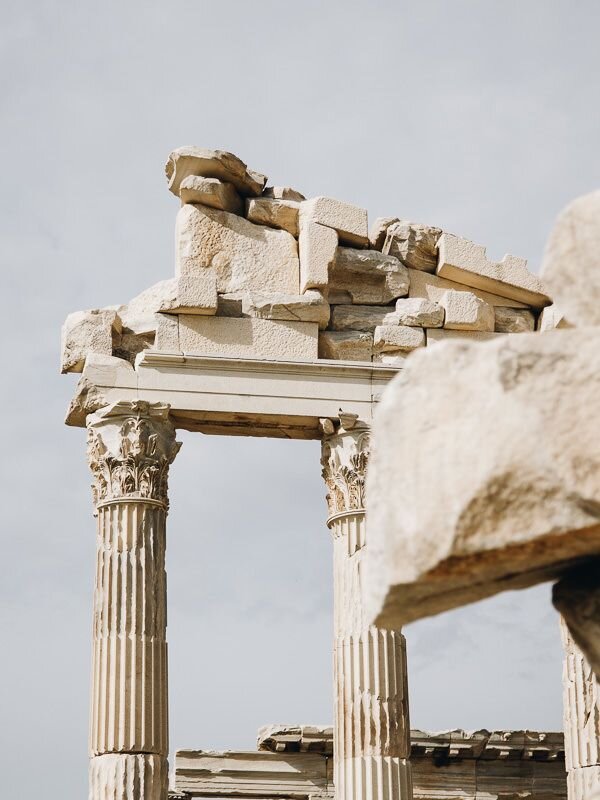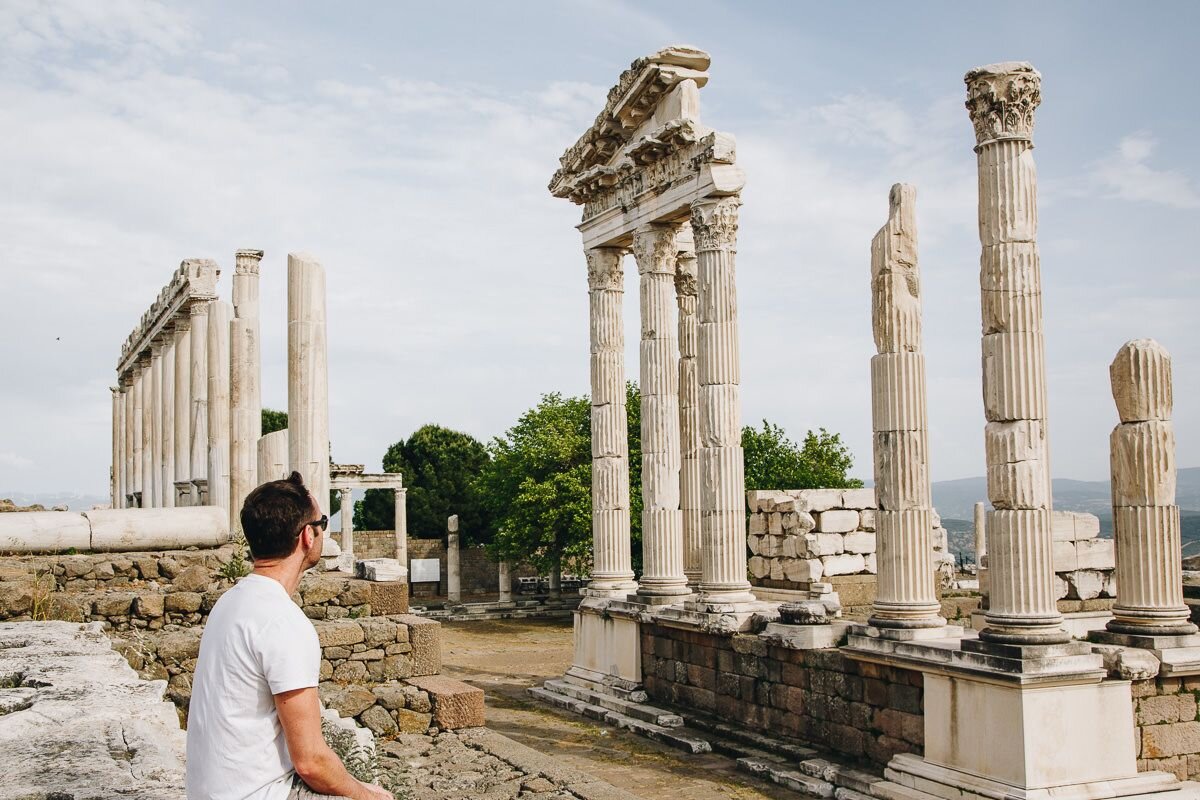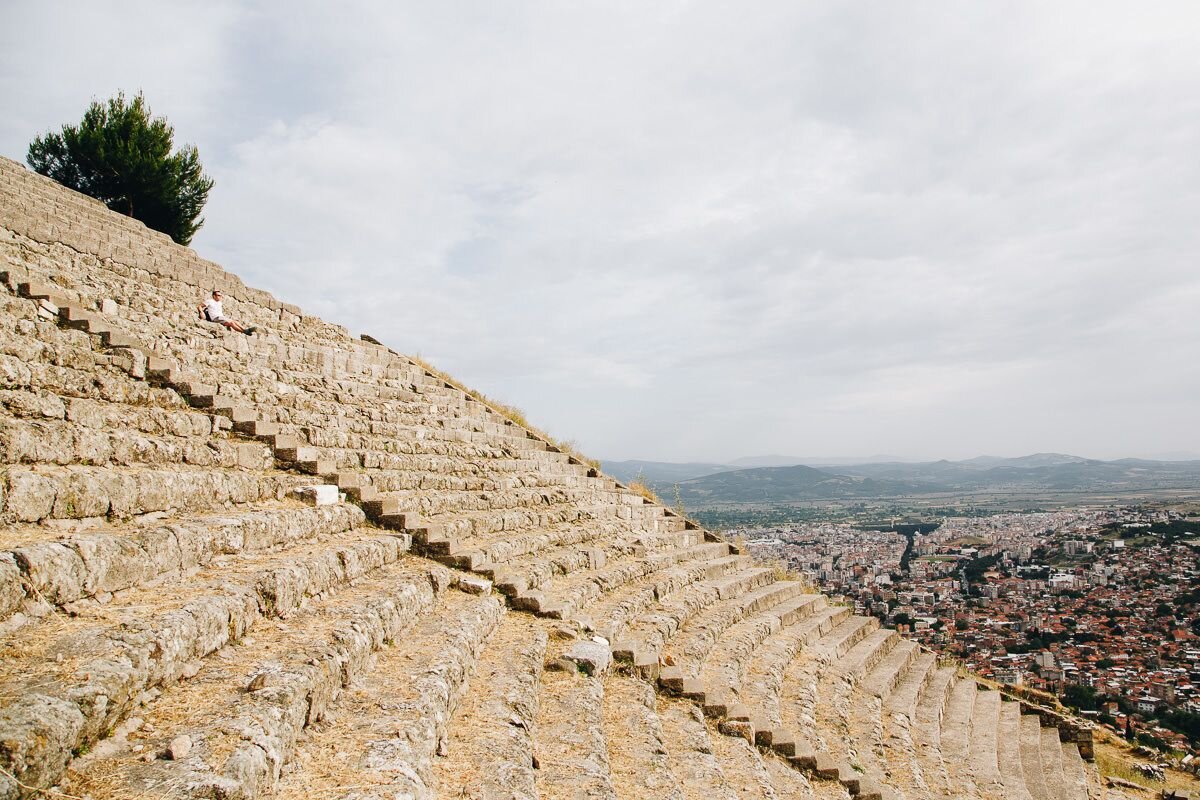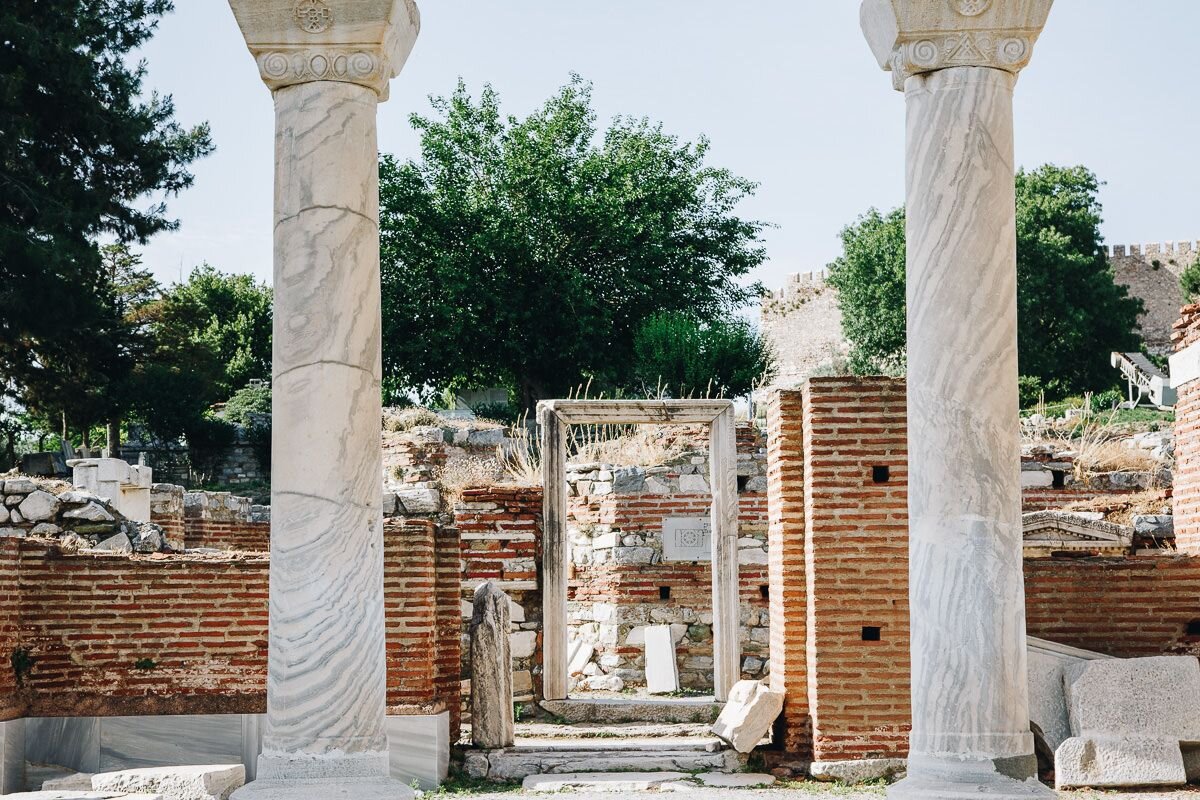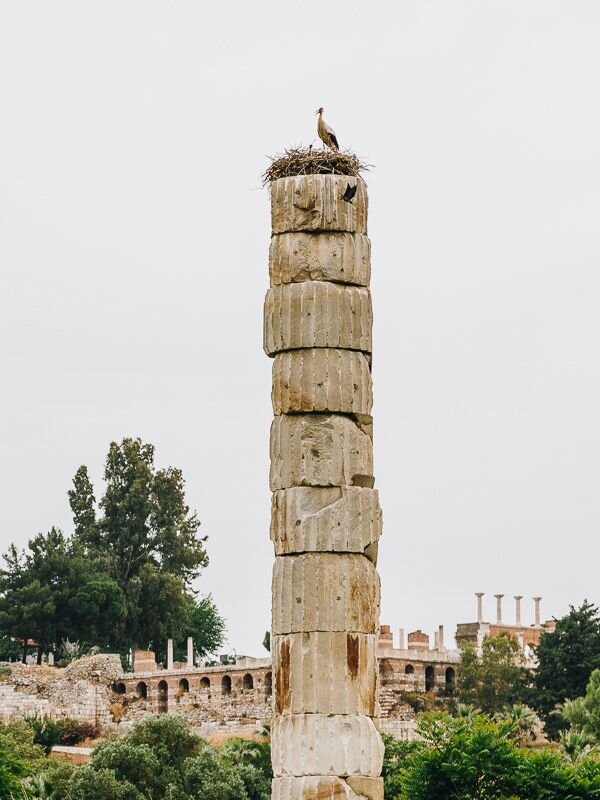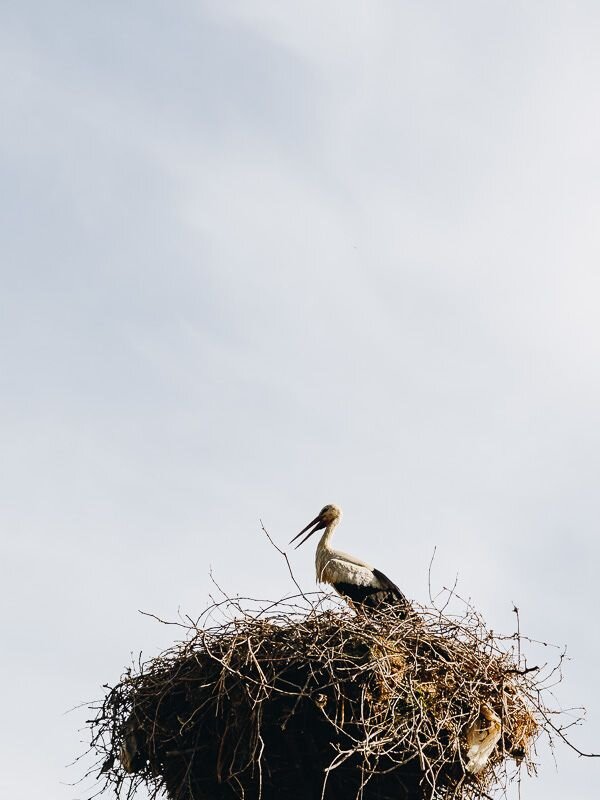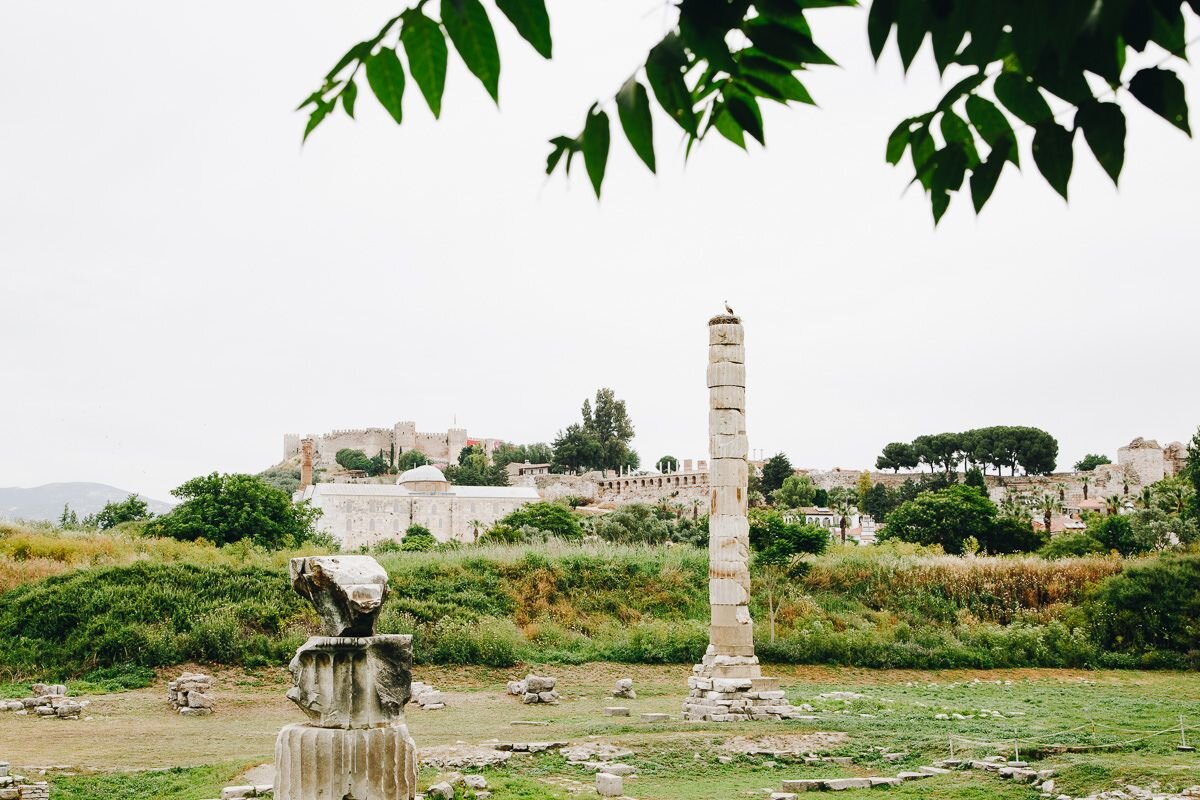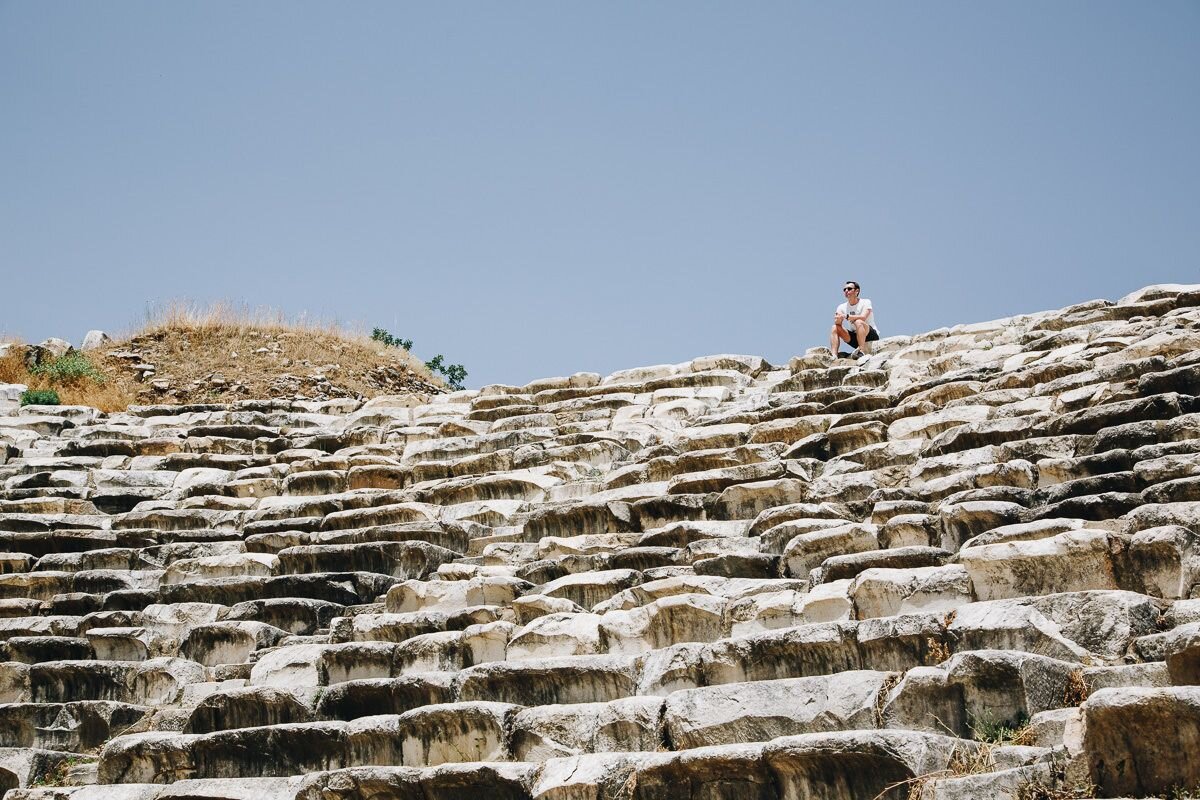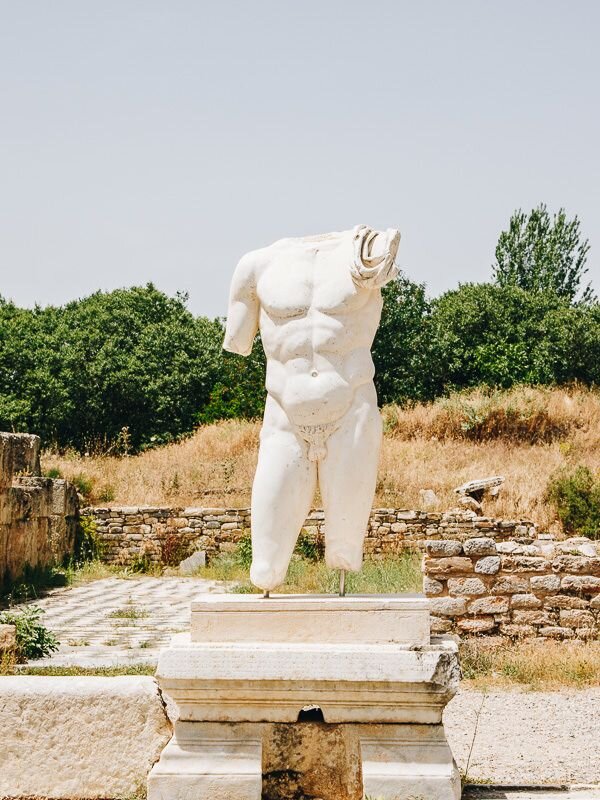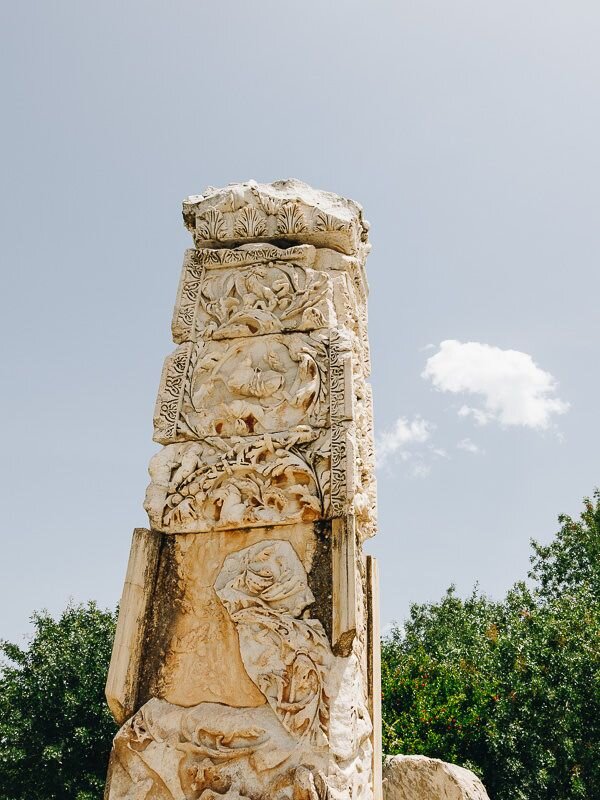There are hundreds of ancient ruins in Turkey that provide a fascinating insight into one of the most influential regions in world history. Here is our selection of the most awe-inspiring sites, each with a unique story to tell.
by Paul Healy
Western Turkey is littered with ancient ruins; evocative places of myth and legend.
Some are ancient Greek towns perched precariously on steep hills, others imperial Roman capitals – the symbols of wealth and power. Between the remnants of gigantic temples and grassy plains strewn with historic rubble, the ancient ruins in Turkey are an evocative walk through history.
As a popular spot for ancient capitals, there is no shortage of ruins in Turkey. Some, like Ephesus, are rightly world-famous; others are barren gems scattered on grassy plains in out of the way places.
We have put together a list of what – in our opinion – are the 8 most interesting ancient ruins in Turkey. This is not just a list of celebrated ruins in perfect condition. These are the ancient Greek and Roman ruins that hold intrigue; a story of it’s past. Unique insights into a very special part of the world.
1 / UNCOVER ONE OF THE GREATEST LEGENDS OF ALL TIME AT TROY
In the interests of full disclosure, there is not a lot to see in Troy. There are no grand theatres, or towering temples, no mighty walls or monumental baths. Even the sea, that used to surround this ancient hill town, has receded many kilometres into the distance.
But what Troy has is the mystique of legend that surrounds its very name. In the 8th century BCE, Homer wrote his famous poem the Iliad telling the story of how the Greek Kings capture Troy after the ten-year Trojan War. That legend and its protagonists live to this day.
Wandering around the rubble of Troy – and it is little more than rubble – you can explore Homer’s tale. See the ramp and western gate through which Achilles was shot in the ankle and died. See the line of blackened rocks where the Greek Kings burnt the defeated city to the ground.
There is a strange excitement and energy when you stand amongst these pitiful ruins, for Troy has been a place of pilgrimage for many great kings. Alexander the Great, Xerxes, Julius Caesar and Augustus all came here to honour those Greek heroes and legends of the past. We did the same.
At the rubble which is Troy, see the ramp and western gate through which Achilles was shot in the ankle and died.
2 / EXPLORE BEAUTIFUL COUNTRY LANES AND TROJAN LEGENDS AT APOLLON SMINTHEION
Wandering Cretans were attacked on this site by an infestation of mice. Recalling an old prophecy which said they should settle where they were overrun by the ‘sons of earth’, they decided to stay and build a temple to Apollo Smintheus (Apollo the Slayer of Mice).
This town became Khryse. In the 8th century BCE, according to Homer, the daughter of the local priest (also called Khryse) was captured during the Battle for Troy. King Agamemnon, leader of the Greeks, took this girl as his trophy and refused to return her to her father. Khryses prayed in anger to Apollo Smintheus and the god agreed to send a plague over the army of the Greeks, creating a pivotal storyline in Homer’s epic.
The temple here today was built by the Romans in the 2nd century.
The journey to Apollo Smintheus requires leaving the motorways and major roads and meandering the winding country lanes of the Biga Peninsular. The roads skirt the coast and azure blue seas before rising up through rural villages and rocky desolate shrubland.
It’s a beautiful drive through a landscape that has barely changed since ancient times.
Wandering Cretans decided to settle and build a temple to Apollo Smintheus after an infestation of mice reminded them of an ancient prophecy.
3 / STAND IN AWE AT THE LIBRARY OF CELSUS AT EPHESUS
Ephesus is the jewel in the crown of ancient ruins in Turkey. Although originally a Greek City built in the 10th century BC, Ephesus became a place of prominence after the Roman Emperor Augustus came to power in 27 BCE and named it the capital of Roman Asia Minor.
Money and power flooded into the city resulting in some remarkable construction. The Library of Celsus is the iconic Roman ruin of Ephesus. Built in AD 125 CE it once held nearly 12,000 scrolls. The bas-reliefs and statues covering the façade are in exceptionally good condition. The nearby theatre is the largest in the ancient world holding an estimated 25,000 people.
The Temple of Hadrian and the Odeon are additional remarkable constructions, but the highlight is the covered terrace houses. These Roman homes were partially destroyed by an earthquake in the 3rd century CE but the remains are in exceptional condition. The houses are now preserved under a large roof, with glass walkways allowing you to explore the buildings without disrupting the site. Frescoes of this age, still intact and vibrant in colour, is a rare thing.
The Library of Celsus is the iconic image of Ephesus, built in AD 125 CE it once held nearly 12,000 scrolls.
4 / WANDER THROUGH THE ATMOSPHERIC HILL TOWN OF BERGAMA ACROPOLIS
Bergama (Pergamon) was the Roman capital of Asia Minor before Ephesus and a major cultural centre of the Greek world. It was originally a Greek hill town overlooking the Caicus River Valley which provided strategic access to the Aegean Sea.
Today, it’s a sprawling ruin complex with testaments to its mighty past decaying on the hillside. There are a number of impressive sites.
The reconstructed Temple of Trajan was dedicated to the emperor after he was awarded god-like status by the Roman Senate. It’s a magnificent site and one of the most photogenic ancient ruins in Turkey. The Theatre of Pergamon is said to be the steepest in the world and provides spectacular views over the countryside.
Past the scraps of columns abandoned in the overgrown grass lies the region’s most famous relic: The Altar of Pergamon. A shadow of its former self, the altar has been stripped bare and its impressive marble facades now reside in the Pergamon Museum in Berlin. But walking the foundations of such a historic monument is a great moment in itself.
As the Roman capital of Asia Minor before Ephesus, Pergamon is one of the most photogenic ancient ruins in Turkey.
5 / SEE THE RUINS OF AN INCREDIBLE BYZANTINE CHURCH, THE BASILICA OF SAINT JOHN
Perched on a hill just outside Ephesus, the Basilica of St John is a ruin different than all the others. Instead of an ancient town or Roman Temple, it’s a Byzantine Church with a special resident. This site is the alleged resting place of St John, who spent his final days in Ephesus and is rumoured to have written his gospel on this hill before dying aged 100 years old.
He is buried here according to his last request.
As Christianity spread, a monumental tomb was built over his grave and in 350 CE a basilica with a wooden dome was built over the tomb. Then in 6th century CE, Justinian and Theodora knocked down the basilica and built a 6-domed church that survived for almost 800 years, before being destroyed by a large earthquake. These are the ruins you see today.
It’s easy to get an idea of the scope and size of the church which would be the 7th largest in the world if it existed today. Some original frescoes, almost hidden from view closed gate, give a glimpse of the grandeur the church once had.
It’s easy to get an idea of the scope and size of The Basilica of st John which would be the 7th largest in the world if it existed today.
6 / SPY ONE OF THE LAST 7 WONDERS OF THE ANCIENT WORLD TEMPLE OF ARTEMIS
Of the 7 Wonders of the Ancient World, only the Great Pyramids of Giza are still standing today. However, it’s hard to pass up the opportunity to see one of them that still has a tiny fragment of its former glory visible for the world to see.
The Temple of Artemis was built and destroyed three times, with the final version beginning construction in 323 BCE. It would become the largest temple in the ancient world.
Its platform measuring 137 metres long, 69 metres wide and 18 metres high, supported over 127 columns. St. John regularly prayed and preach to the local Ephesians here and the temple is mentioned in the Acts of St. John. It was destroyed in 286 CE by the Goths.
All that stands today is a single column assembled from the rubble that was found at the site.
While not enough to bring this place to life, it’s still one of our favourite historical sites in Turkey. The heritage of the location and the grandeur of what once was is reason enough to visit this ancient wonder.
The Temple of Artemis is one of the last 7 Wonders of the Ancient World still standing.
7 / BECAUSE SOMETIMES, SIZE MATTERS - THE TEMPLE OF APOLLO
As you approach the Temple of Apollo it doesn’t seem that impressive. Only three columns are still standing with a pediment across the top of two of them. It is not particularly ornate, nor does it have a dramatic location.
But as you descend into the temple, the reason behind its status becomes obvious. Apollo is colossal. Unlike many of the other historic sites in Turkey, the Temple of Apollo shows the size, power and might with which the Romans honoured their Gods.
The temple was built on a platform over 5,500 square meters, upon which rested 122 columns each with a diameter of 2.5 meters. The walls of the temple itself rose 28 metres above ground. The whole site is a monstrous undertaking of enormous scale.
The columns rise like mighty redwoods into the sky. One fallen column gives you the opportunity to fully appreciate its scale. As we strolled around, it became hard to imagine that this was only the fourth largest temple in the ancient world.
The Temple of Apollo was built on a platform over 5,500 square meters, upon which rested 122 columns each with a diameter of 2.5 meters.
8 / PERUSE THE INCREDIBLE MARBLE RELIEFS APHRODISIAS
Aphrodisias is an ancient Greek town deep in the Anatolian hinterland. It got absorbed into the Roman Empire and most of the site dates from Roman times. Many ruins are in good condition with the Tetrapylon and Odeon standing proud and an excellently preserved stadium that seems to go on and on. But the undisputed highlight is the Sebasteion.
The Sebasteion, meaning the Temple of Emperors, was built from 20 CE to 60 CE. When completed it was a magnificent three storied building with Doric, Ionic and Corinthian columns. Sadly, much of the building itself was destroyed, but many of the marble reliefs that adorned these walls have survived.
The reliefs are now housed in a purpose-built room attached to the on-site museum. The reliefs are well presented, well explained and in excellent condition. They tell the stories of Gods and of the Emperors, of their triumphs and conquests. An hour spent wandering around the museum is a tour de force of myth, legend and truth and unquestionably makes Afrodisias an excellent final stop on our tour of Greek and Roman ruins in Turkey.
Aphrodisias is an ancient Greek town deep in the Anatolian hinterland which was absorbed into the Roman Empire.
ANCIENT GREEK AND ROMAN RUINS IN TURKEY THAT DIDN'T MAKE THE CUT
We had a great time checking out all the ancient ruins in Turkey, mostly because we love travelling and exploring everything we possibly can. So even if a site was a bit of a dud, the pleasure of just strolling around a new place in the hope of uncovering something that fascinates was enough to keep us marching from one Greek ruin to another.
Having said that, there are no duds, just some that appealed more than others. If you are interested in all the places we visited but didn’t include on this list, here they are:
Alexandria Troas; Assos; Priene; Miletus; Heraklia; Hieropolis; Sagalossos; Valens Aqueduct; Ascelpion and Aspendos.
Source: Anywhere We Roam

